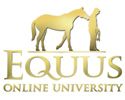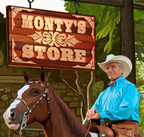I am completely new to the Uni, and only been riding 1 year. I’ve purchased the Dually and must say I’m loving the vids.
A couple of questions I have are around training. How much training do you do each day? When do you know to stop training (such as leading, or mounting)? I’m yet to do Join Up and will record it just in case I manage it first time!!
What should I do if join up doesn’t work first time? Do I stop and try again next day, or do I continue until she joins up?
Regards
Sean




Good questions!
It's always hard to determine when to stop, because either it is going so well you just want to try a little bit longer, or - on the opposite - you see no improvement and don't want to let up before you do - in both cases ending up aggravating the horse.
My personal experience is that you can train most things for as long as you both are having fun with it.
Or this way: If you're not smiling easily anymore - stop what you're doing immediately!
I realize that is a vague answer but it is in the end something that comes down to what the individual horse can cope with at that specific point in time, and we need to learn how to read them.
For example, if the horse is completely green or very young it may be that it can't cope mentally (or physically) with a longer session even if it goes ever so well.
If the subject of the lesson is a new thing for the horse you need to break it down in lots of incremental steps, starting with the most basic thing (standing still) and all the way up to the final goal. Then you make a strategy for how to achieve these things before you start the session. After that it pretty much takes the time it needs to take and several short lessons are probably better than a few long ones.
It is of course important to have achieved some sort of positive change before you end the session so the lesson for the horse isn't: "how to get out of work" by pulling, kicking, moving about or whatever evasive maneuver it can come up with.
That said, maybe the goal for the lesson needs to be a very, very small step in the right direction and end it there before it goes south on you.
Also, if both you and the horse seem confused and confounded, maybe it is best to stop (preferably on a calm, positive note), go home and figure out what to change to get a different result, and try again another day.
Finally, think of a session with the horse as a conversation between student and teacher, not a trainer teaching tricks. (Especially important when doing Join-up!)
No conversation has ever benefited from one party screaming in a foreign language or endless nagging.
Guide your horse by being calm, consistent and clear, and the use of PICNIC (Positive instant consequences, negative instant consequences - watch the vids!) to make it easy for him understand what you ask of him.
Cheers,
Kicki
.
Join up is likely to be the first time a human has used their own language to communicate with your horse. When you get the breathing & body language right your horse will respond very quickly, but not necessarily totally. You will note that Monty achieves Join up in a matter of 4 or 5 minutes. Granted, he is THE EXPERT. Nevertheless, if you have done your studies well & make even a passable attempt your horse will show their appreciation by, at least, giving you some if not all of the four signs - ear locked on, smaller circle, licking & chewing & lowering the head ( arabs often have majestic head carriages so possibly not nose lowered to the soil even for Monty ), in a similar time. If not, then look in the mirror because, unless your horse has been totally traumatised, the problem with Join up is you.
.
Enthusiasm is brilliant but true advancement requires dedication & hard work. Apollo, my competition horse, 75% Arab (def) 25% Connemara (poss) was gentle, brave, intelligent, fast, strong, exciting & most of all, understanding. He loaded without hesitation, despite having been in a trailer accident where the trailer overturned & he was trapped under the other horse - those two events, the accident & the subsequent loading were almost two years apart, two years when we hacked to & from events. Gaining trust like that puts your relationship on a whole different footing.
.
You are beginning a very long & worthwhile journey. There are unimaginable highs awaiting you but also significant failures ( which are opportunities for learning ). Do not ever blame the horse, who only reacts to any situation by instinct. Instead, make it your daily mission to have your horse instinctively look to you as their trusted leader. From that standpoint you can achieve so much more than would seem logically possible. Cheers, Jo.